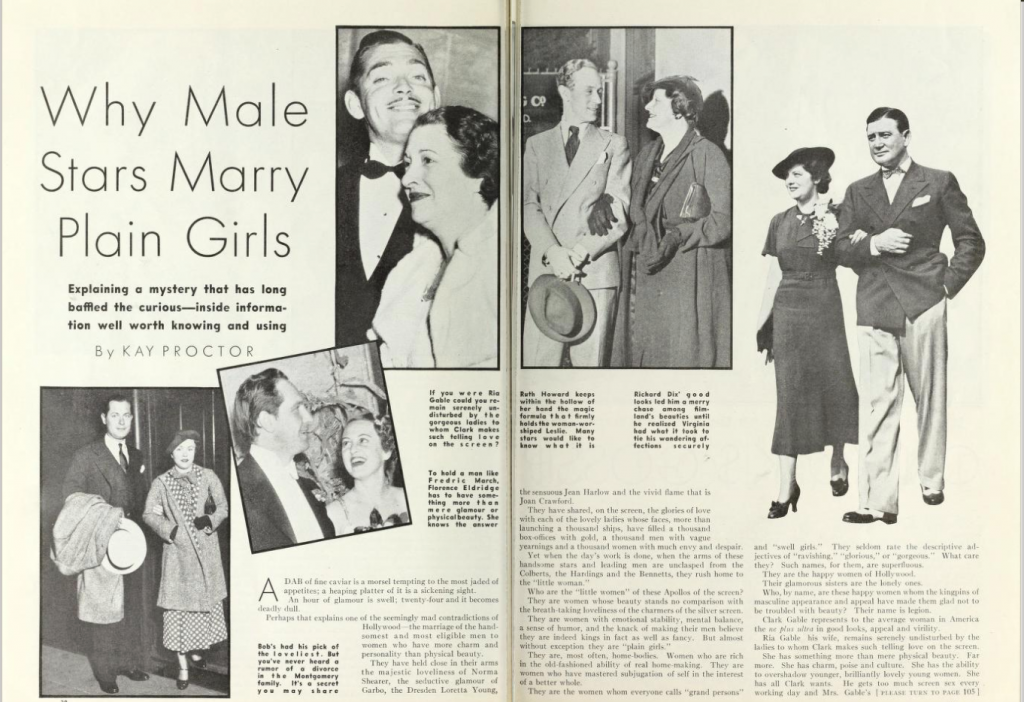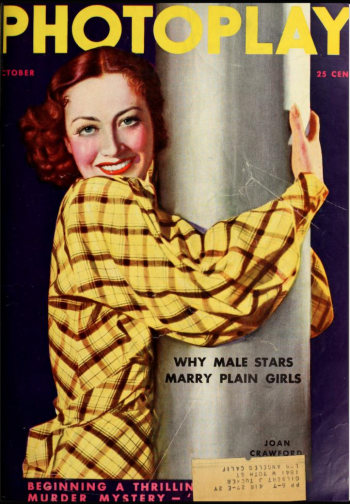CDH welcomes new member, Professor Tamar Jeffers McDonald, Dean of the School of Art and Media, who introduces her research interests and reflects on their relationship to design history.
The work of the Centre for Design History at the University of Brighton has impressed and inspired me, and I share its desire to open up “an ‘expanded field’ of design history”. From my doctoral thesis onwards, I have been intent to place my various objects of study – stars, films, performances, mise-e-scene, costume, movie magazines – within their wider contexts, and find analysing images and objects most illuminating when they are understood within specific historical and societal moments.
While always approaching my work as a historian of Hollywood film, I have developed my research across different topics and methods. My first academic scholarship was concerned with film genres, including romantic comedy, the Gothic and melodrama, arising from one of the main strands of my doctorate, which investigated the myth of the aged maiden attached to Doris Day, and in so doing discovered a mini-genre of films devoted to exploring the dilemma of female virginity in mid-century American cinema. This work also involved costume and performance analysis, and these have all remained pertinent interests.
Consolidating my work on Day, stardom, costume, and performance led to the 2013 monograph, Doris Day Confidential: Hollywood Sex and Stardom, which also introduced what is now one of the main foci of my research, the movie magazine. I read these publications as objects of material history themselves, as well as conduits of historical assumptions – about appropriate gender roles, goals, behaviour, desires and appearance – carried to readers via the one product whose promotion formed the centre of every issue, stars, as well as by those other consumables such as clothes, items of personal hygiene, grooming, and household improvement, that surrounded and contextualized the filmic elements.

Fig. 1 Two pages from a 1935 magazine article showing married couples; the men are famous movie stars
While work on movie magazines is still relatively rare, even rarer is that which focuses on the magazine itself as an object of material history. Most articles and even full-length monographs that examine these colourful and fascinating publications are content to quote from isolated articles, rather than studying items in their full printed contexts. Yet my work contends that the full meaning of any article, editorial, photograph, reader’s letter or advertisement can only be grasped when considered in situ: the juxtaposition of these different contents inevitably impacts on their meaning. For example, an article in the October 1935 issue of Photoplay, provocatively entitled ‘Why Stars Marry Plain Women’, seems to endorse the allure of regular females. Male stars, the piece asserts, would rather take ordinary women – women like the magazines’ readers – as their brides than their too-glamorous movie co-stars. But while the opening two-page spread of the article balances text with photographs of the happy, if ill-matched, couples (Fig 1) the end of the piece, displaced in common publishing practice to the back of the issue, tells a different story. Here the concluding text is surrounded by advertisements for beauty products, its valorising of the regular woman over the Hollywood glamour goddess problematised by ad copy screaming that marital prospects for women with dry skin or unplucked upper lips are hauntingly bleak (Fig 2).

Fig. 2 The last page from the same article; the text is printed opposite adverts for beauty products
In addition to working on an edited collection on the importance of design elements – font, layout, photographs, illustrations, etc– in the movie periodicals, I’m also currently researching and writing monograph examining the genesis of these magazines and linking their rise to that of film stardom. I’m looking forward to learning more about the work of other researchers in the CDH and to many fruitful conversations in the coming months.
– Professor Tamar Jeffers McDonald (Dean of the School of Art and Media)




Leave a Reply